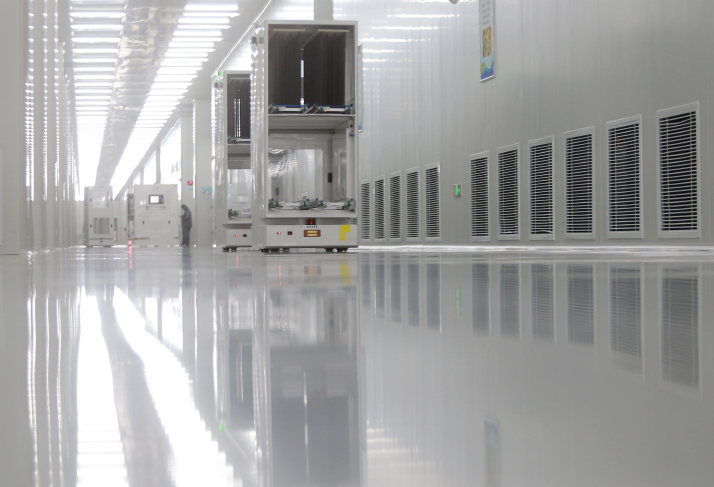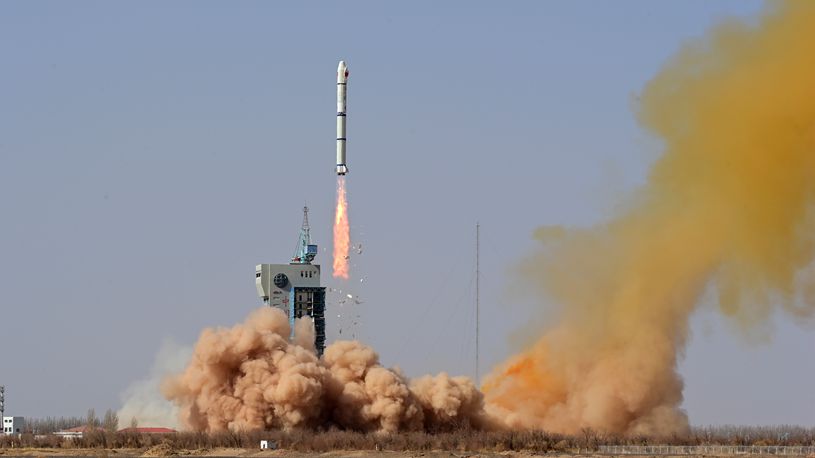Economic growth: Quantity vs quality

Robots work at a semiconductor company in Gaoyou, Jiangsu province, on Feb. 24. [Photo/Xinhua]
The quantity/quality debate is something we, as businesses, product creators and economic stewards, often face. Do we focus on high-quality/low-unit development or sacrifice some quality for the scalability of mass output? Both have their benefits and challenges. But sometimes a situation calls for quality and quantity in equal measure and striking a balance isn't always easy.
At the First Session of the 14th National People's Congress (NPC), the highest state organ of power in China, from March 5 to 13, steadying and growing the economy was perhaps the most important topic of discussion and deliberation.
In short, the message from the country's leadership was that China is planning a course for a GDP growth of approximately 5 percent in 2023. But this must be "quality" growth as well. "While the annual GDP target is an appropriate growth pace required to stabilize expectations and economic expansion, the Chinese economy intends to continue its focus on high-quality development," Liu Shouying, Dean of the School of Economics at Renmin University of China, said, according to Xinhua News Agency.
This approach recognizing the need for a delicate balance of quantity versus quality is a positive sign.
So, where to begin? We can start by using our senses. A walk or drive around Beijing, Shanghai, Chongqing, Wuhan or Chengdu will stir the senses. You can see people out and about at almost pre-pandemic levels.
On the streets of these cities, you can once again hear traffic, the buzz of people talking to each other and shouting into their mobile phones. You can smell the street foods, congee and dumplings of vendors and shops cooking, and you can once again touch and feel products in physical retail environments.
Bringing the five senses back to life is the necessary foundation for growth. This gives me a great deal of optimism that, over the next year, the Chinese economic engine will once again be shifting into high gear.
Now, we move on to the questions of quantity and quality.
Quantity
There are several economic key sectors that require rapid growth in quantity.
The first is employment. The three-year COVID-19 era disrupted the normal patterns, and reliable growth, of employment, a key driver in China's economic growth over the last 25 years. Healthy engagement drives healthy spending on necessities, housing, luxuries, etc.
Over the last three years, as factory activity either slowed or came to a complete halt, many workers returned to their hometowns—and many stayed there.
The reduced foot traffic in or closing of small retail shops, department stores, restaurants and malls also left many frontline workers underemployed or unemployed. The construction and infrastructure sectors witnessed a similar effect. Many tech workers found themselves made redundant in the downturn and China is now producing a record number of college graduates who have entered a challenging private sector employment landscape.
Increasing the quantity of job opportunities available across all sectors of the economy is at the top of the agenda. This is the key to the spending and consumption that will charge the economy back to life and create a virtuous cycle of employment/spending/employment.
This year, China will "create around 12 million new urban jobs, with a surveyed urban unemployment rate of around 5.5 percent," according to the government work report submitted to the NPC for deliberation on March 5. Other annual objectives include "keeping the consumer price index increase at around 3 percent and grain output above 650 million tons."
Another key area where quantity in growth will be positive is in providing manufacturers and global buyers with incentives to spur the goods export sector. As much as consumption and the digital economy have helped balance the Chinese economy, manufacturing and exports are still critical to growth and employment.
Whatever can be done to get the greatest number of small, medium-sized and mega manufacturers back up to higher or full capacity will generate growth in the coming 12-24 months.
Quality
The digital economy matters to China's near and long-term economic development. It is worth reiterating that here in the context of quality growth.
Said economy is a base for high-paying white-collar jobs across different industries as well as drives innovation.
It is innovation in sectors such as electric vehicles, data science, high-value/hi-tech manufacturing, clean energy, semiconductors and cutting-edge biopharmaceuticals that provides quality growth.
At the NPC session, officials underscored efforts to pursue high-quality development through policy priorities such as accelerating "the modernization of the industrial system and promoting the transition to a green development pattern."
China aims to reduce its energy consumption per unit of GDP by around 2 percent this year and "will strive for better results in actual work."
The NPC session also outlined objectives of continued reductions in the country's discharge of major pollutants, stronger control over the consumption of fossil fuels and steady improvements in the natural environment.
On boosting the country's technology strength, the government work report urged for "pooling quality resources and making concerted efforts to achieve breakthroughs in core technologies in key fields." It also underlined efforts to make traditional industries and small and medium-sized enterprises more advanced, smarter and eco-friendlier.
"We have taken decisive measures to step up macro policy support while refraining from adopting a deluge of strong stimulus policies that would eat into our potential for future growth," the report further read.
High-quality development is deemed "the first and foremost" task in China's modernization endeavor. Instead of taking GDP growth as the sole criterion for success, China now focuses more on improving the quality and efficiency of its growth.
As part of the better quality of development, China has seen increased spending on research and development over the past five years, with reduced energy intensity and carbon emissions, according to the report.
By pursuing the following strategies, China could balance the speed and quality of its economic growth:
China has made some strides in addressing air pollution and curbing carbon emissions, but more needs to be done: The government could continue to invest in renewable energy and implement policies that encourage companies to reduce their environmental impact;
China has made significant progress in areas such as artificial intelligence and 5G technology. By investing in research and development, China can continue to drive economic growth while also improving productivity and competitiveness;
While economic growth has lifted many people out of poverty, it has also widened the rich-poor gap. Quality growth will benefit all levels of Chinese society;
While China has been dominated by large state-owned enterprises, the government could take steps to encourage entrepreneurship and small business growth, which could in turn promote innovation and competition.
These tactics would also ensure that the country's economic development is sustainable and benefits all segments of society.
The author is founder and CEO of U.S.-based consulting firms 5 New Digital and China BrightStar.
Photos
Related Stories
- Chinese Premier's down-to-earth approach at first press conference inspires confidence
- China’s recovery on track, to inject new impetus to global economic growth: NBS
- Private sector set to drive economic growth
- Stable economic policies likely to remain
- Nation maintains solid momentum for growth
- Global focus turns to China’s two sessions for relief amid economic woes
- Nation's growth tops global interest list
- Global Predictions 2023 | China's economy set to grow strongly again, supporting world growth: Vince Cable
- Economic experts upbeat about China's growth
- Foreign CEOs upbeat on China's market
Copyright © 2023 People's Daily Online. All Rights Reserved.









